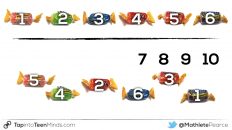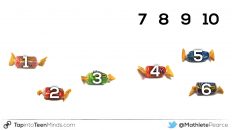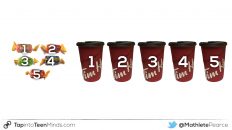This “stable list” must be at least as long as the number of items to be counted. If counting 20 items, their stable list of numbers must be to at least 20.
The first principle of counting involves the student using a list of words to count in a repeatable order. This “stable list” must be at least as long as the number of items to be counted.
For example, if a student wants to count 20 items, their stable list of numbers must be to at least 20.
For a full summary of all counting principles, read the original blog post.




[…] See this animation in video format here. […]
[…] Thinking deeper about stable order, we might consider rote counting from 0, counting on from a number (i.e.: “start at 6 and count to 18”) and counting backwards (i.e.: “count backwards from 15”) skills that are related to stable order. “The child uses a repeatable list of words that has more words than the number of items to be counted.” Assisting students in acquiring these skills and flexibility to count on and count backwards will take time, but is helpful to building a deep understanding of counting and quantity. See this animation in video format here. […]
I love your principles of counting videos. Do you have any videos like these for the kids?
We have a bunch of engaging math tasks over on our Make Math Moments website that are full units that students can engage with from K-12!